Home » Construction » Common Insulation Types for Your Home
Global warming is an existential threat to the planet. The world is experiencing record-setting heatwaves in summers and unusual cold spells in winters. As weather conditions are becoming more extreme, it’s becoming increasingly difficult to protect and preserve our surroundings, especially our houses. It’s a wildly underrated aspect of climate change. Let’s take Pakistan as an example. The climate of this South Asian country is generally hot and dry. If you have not used any form of insulation on the roof of your house, the sun rays will heat up the roof, which will absorb all the heat and emit it later in the day when the sun sets in. In this blog we will discuss different types of insulation for homes and their benefits.
Types of insulation for homes
Isolating the home’s environment from external weather conditions will make your house energy efficient and in return there will be less energy consumption and reduced electricity bills. Thermal insulation— which includes wall insulation, ceiling insulation and roof insulation—is an effective way to reduce heat trapped in the house. Following are some types of insulation for homes commonly used in Pakistan:
- Polyurethane insulation
- Polystyrene insulation
- Insulation via Rockwool
- Fiberglass insulation
Let us discuss each of them in detail.
Polyurethane insulation
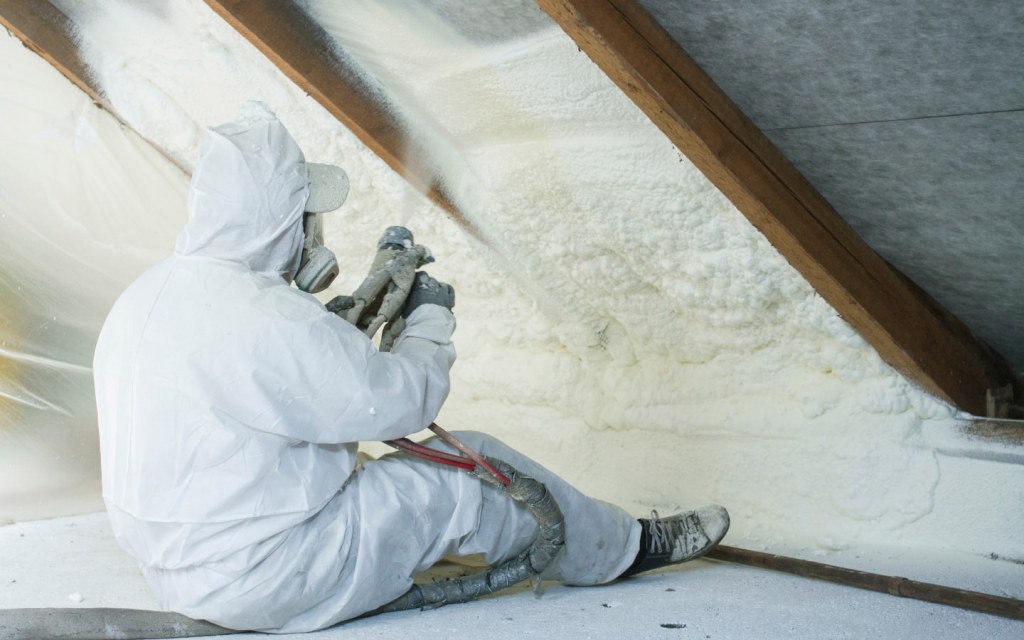
One of the most widely used insulation materials in Pakistan is polyurethane. It is created by mixing an isocyanate, like Methylene Diphenyl Isocyanate (MDI) along with a polyol. When these components are mixed together it forms a foam.
The resulting material is a lightweight polymer having superior insulating properties. Compared to other building materials, polyurethane insulation has a high thermal resistance and a low thermal conductivity – one of the major factors when looking for ways to reduce electricity bills. This is the most used insulation material in Pakistan. It is also used to insulate deep freezers and refrigerators, so it’s quite good at keeping temperatures hot or cold.
Spray polyurethane insulation foam is a kind of foam sprayed on walls and on the roof to protect the house from heat and cold. Once it dries up it turns into solid insulation material. It keeps the roof cool and protects the building from penetration of moisture, cold air and sound. Its impressive R-value does not let the heat transfer.
It can cut down energy bills to 30 or even 50 percent. People usually spray polyurethane foam on the roof, walls and also in crawl spaces to create an air barrier. It is also used in attic insulation. Some of the benefits are mentioned below:
- Promises high thermal resistance and reduced heat transfer, lowering utility costs
- Prevents prevent moisture in the walls and removes condensation and mold
- Does not allow unwanted pollen, dust and allergens, etc. from entering the house thus ensuring improved air quality
- Reduces air-conditioning needs by 50 percent
Polystyrene insulation
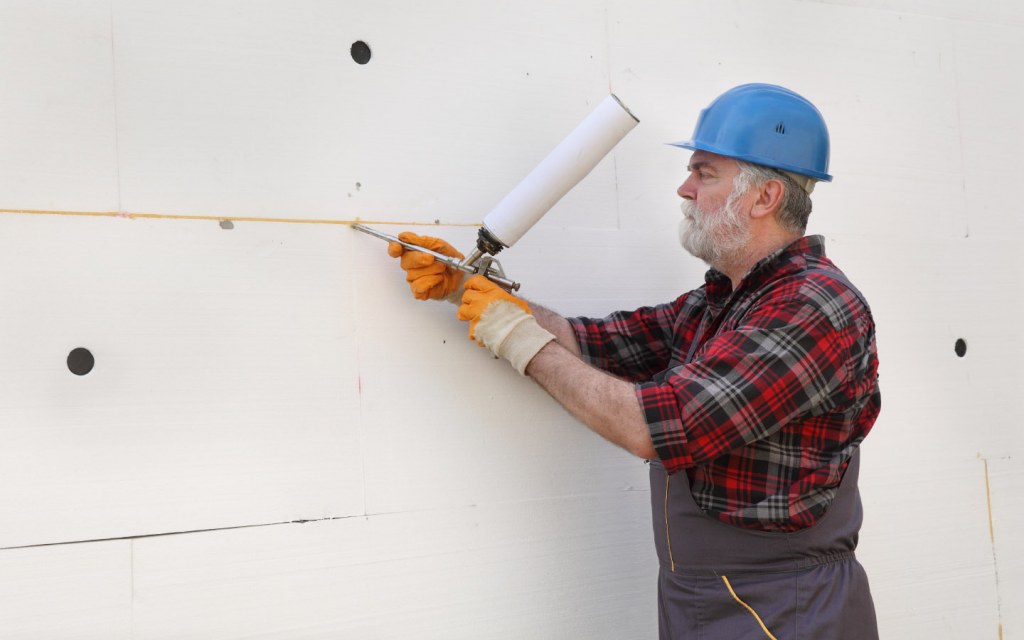
Polystyrene insulation, more commonly known as ‘thermopore’ in Pakistan, is another popular type of insulation for homes. It is used to keep the roof cool in summers and warm in winters. The extruded polystyrene – with no pores is a good option for insulating homes.
Polystyrene is a synthetic hydrocarbon polymer made from styrene. It is either used in the form of a foam or in solid form as well. Polystyrene is hard and brittle. It is a poor barrier to oxygen and water vapour and has a low melting point. This makes it an excellent insulation for homes.
Polystyrene is a waterproof foam. It comes in two forms, expanded form (EPS) and extruded form (XEPS). Both are widely used in the country when it comes to different types of insulation for homes. The extruded form has a close-cell structure and has a higher thermal resistance making it ideal for insulating homes. Usually, polystyrene foam is cut into blocks. The foam is of flammable material and must be coated in a chemical i.e. Hexabromocyclododecane (HBCD), which will make it fireproof. This chemical has some environmental risks.
It is usually recommended to insulate the house at the time of construction, where the sheets are placed inside the walls and covered with cement or concrete. But in case you haven’t used polystyrene insulation at the time of construction, you can still use the foam on the walls. Once it dries, then apply cement or concrete on it. It is going to be a costly process though. The benefits of polystyrene insulation is mentioned below:
- Insulation that guarantees complete sound-proof environment
- Excellent waterproofing capabilities
- The low thermal conductivity keeps the house cool in summers and warm in winters
- It is a blown-in foam that can seal any cracks in the house foundation or in roof.
- When it is dry, you can easily cut out holes for electric wiring.
Fiberglass insulation
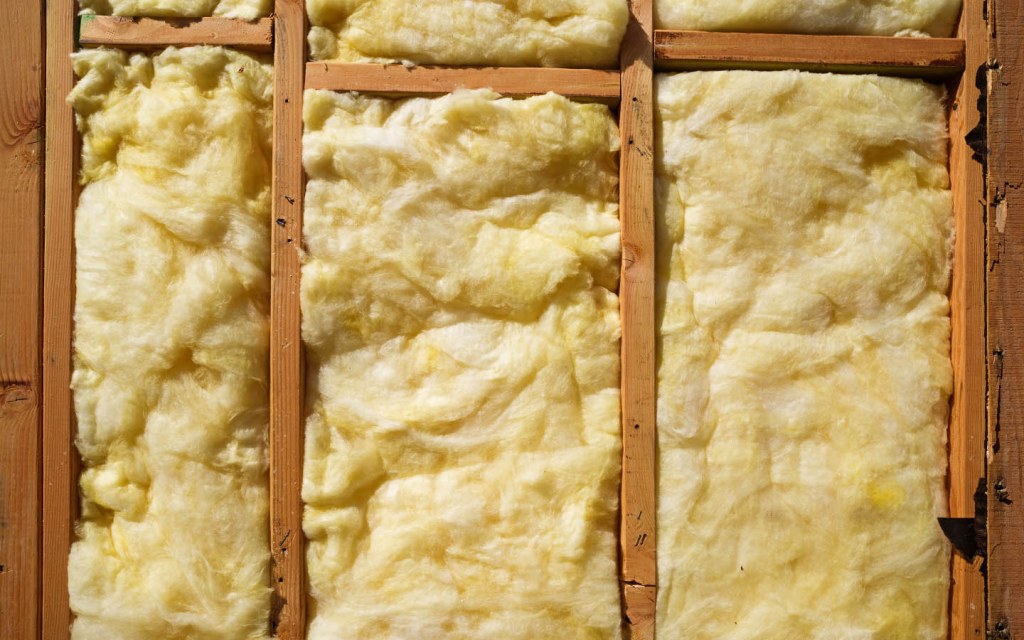
It’s impossible to discuss types of insulation for homes without mentioning fiberglass.
Although the usage of fiberglass in wall panels is a new home decor trend, the material has long been used in building insulation.
Fiberglass consists of extremely fine glass fibers. It is a kind of plastic reinforced with fine shards of glass. Having high thermal resistance, fiberglass is dense with some air pockets in it.
Hire a professional company to install fiberglass insulation in your walls. The procedure needs protective gear: proper gloves, face masks and clothing to install fiberglass. If you come in direct contact with fiberglass you will get itchiness, respiratory problems and skin rashes.
Before installing fiberglass you need to be sure there are no leaks and cracks. Seal any draft you may find before installing fiberglass batts. Some of the advantages of installing fiberglass insulation are as follows:
- Resistant to moisture damage
- Non-flammable
- Simple installation
- Higher thermal resistance
- Most cost-effective insulating option as compared to others
Rockwool insulation
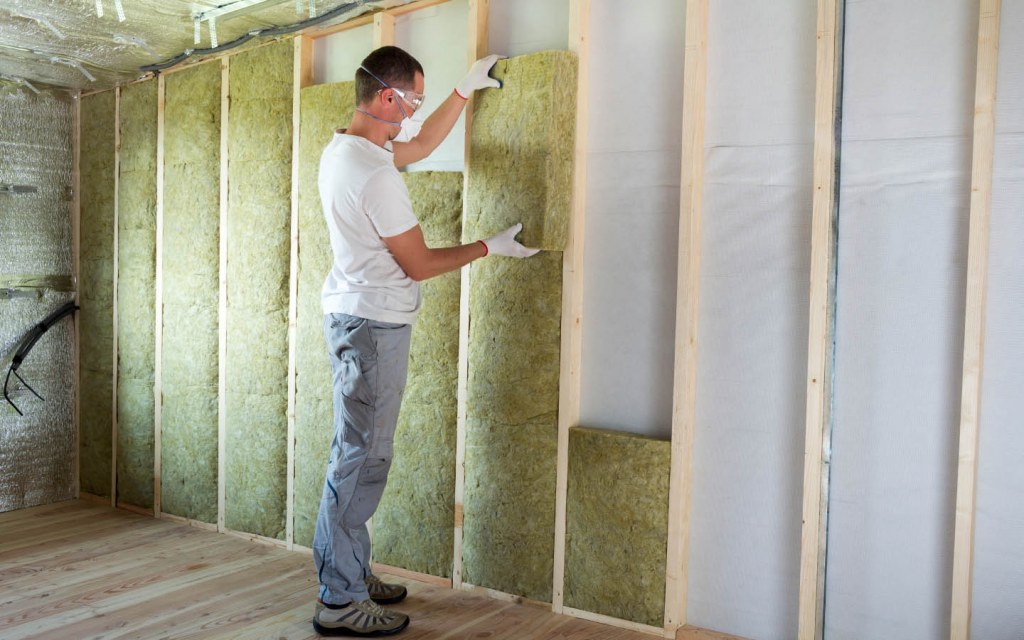
It’s quite a popular choice when it comes to types of insulation in Pakistan, mostly owing to the ease it provides during installation.
Rockwool, also known as mineral wool, usually comes in easy-to-install batts, just like fiberglass. But rockwool isn’t composed of shards of glass. It is, instead, made up of – you guessed it right – rocks. How is that even possible? Let us find out.
The hardy rock is heated in a furnace where it takes about 3,000 degrees to melt it into liquid. This hot liquid is spun at super-high speed until it forms long fiber strands. It forms the similar strategy that a cotton candy machine follows. These strands are then compressed into dense matts. These are then cut into convenient-sized batts for insulation of homes.
In house construction, rockwool is used in walls, ceiling, and attic, even in crawl spaces. Since it is highly fire-resistant, the material can also be used as a firestop between floors. Some of the benefits are mentioned below:
- Made from natural material
- Comprises 75 percent of recycled content
- Stops the transfer of heat and cold effectively
- Extremely fire-resistant
- Repels water and makes the environment sound proof
- Rockwool requires low maintenance
- Can be fit in tight spaces too
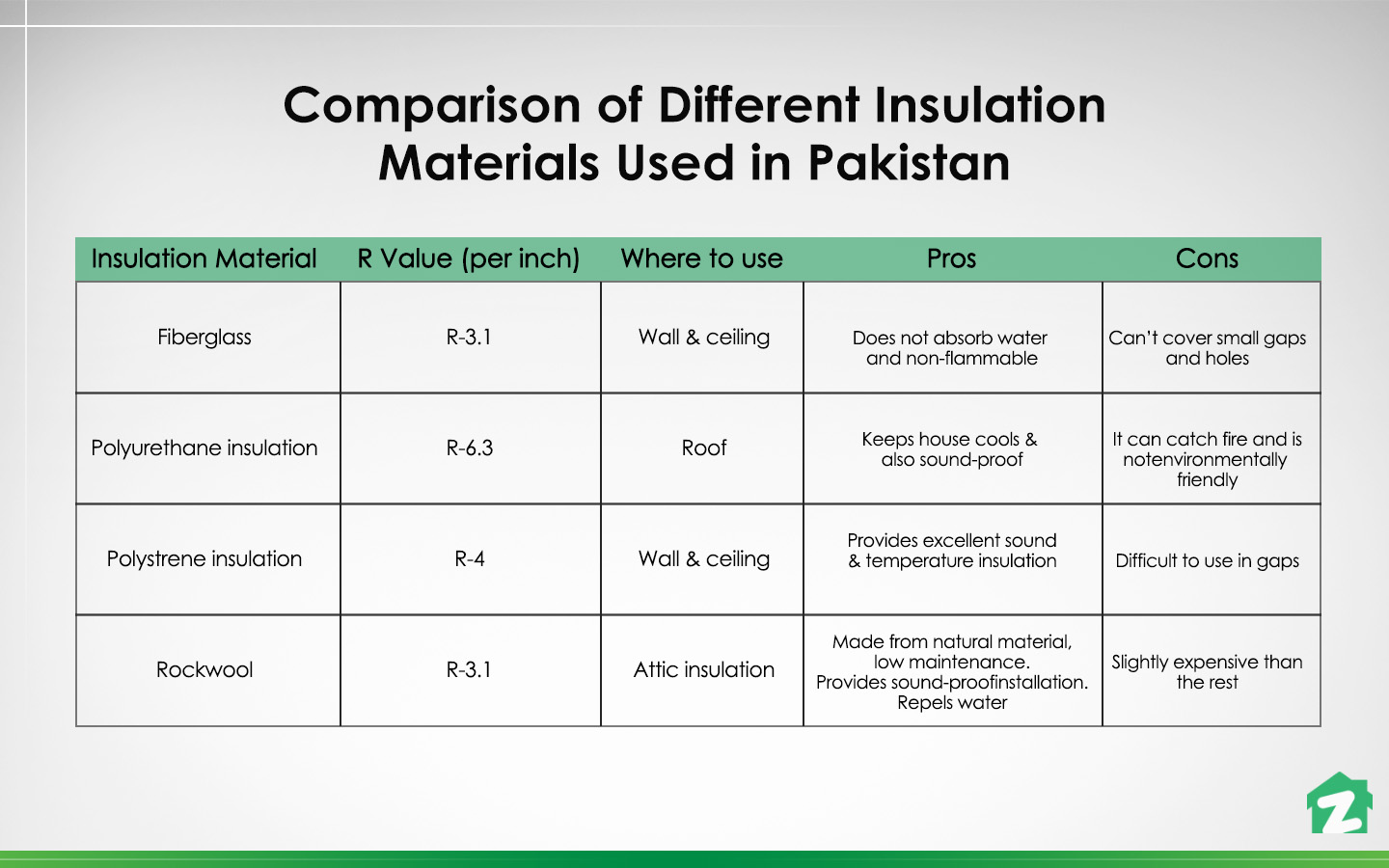
Choose the best option from the aforementioned types of insulation to keep your house cool in the scorching summer heat and reduce AC bills. For more updates, stay tuned to the best lifestyle blog in Pakistan. If you have any questions please reach us at blog@zameen.com and we will get back to you.
Comments are closed.




AoA
I found your post very informative. This is the first time I came to know about the existence of these kind of insulation techniques. I would appreciate if you can share any knowledge/contacts of some companies doing these services particularly in the area of WAPDA TOWN Lahore using “Polyurethane Insulation” technique.
Regards
Wa alaikussalam,
Thank you for your comment and I’m glad you liked the post.
We got our quotes from Master Thermo Shield and you can get in touch with them through their website http://www.masterchemical.com.pk.
You can also run a Google search for ‘Insulation in Lahore’ and plenty of other vendors will pop up.
Good luck!
This method sounds valuable to save house from sun’s heat. Thanks for sharing this informative post.
Do not forget to apply water proofing material on concrete surface before covering with PU sheets.
An other simple way is to cover top roof with half inch thick white marble. This can bear weight , Very long life , Provide water proofing , Easy to clean, White color of marble shall reflect sun light & Top concrete shall be safe from sun heat in summer.
This is cheaper,simple & reliable , Tested idea. Good luck
Hi Muhammad,
I read and like your idea of simplicity .. white marble. I have following scenario and would like your expert opinion:
The roof is appx 200 sq. ft, appx. 30 yrs old, living in Rawalpindi/Islamabad, and have seepage/leaks from the areas where walls joins the ceiling (though concrete was installed in a one go … no joints). I was thinking to have a 1/2 (0.5) Inch pane (size zero) coating/layer on top of roof. But I have following concerns (after consulting different builders/engineers):
1- Another layer on top of roof will make it heavy … will the walls and existing concrete will bear the extra load ? … does it requires beams especially for big hall and drawing/dinning rooms ?
2- Very Important: Due to contraction and Re-traction (extreme Winter and Summer seasons in Rawalpindi), the two layers of concrete will not GEL together and after some time there will be gaps or cracks which will soak the water causing leakage/seepage ?
I will really appreciate if you people can share your experiences and can give your expert opinions.
contactable at: hamid.hassan@gmail.com
Many Thanks in advance
Sir what would be the sq meter cost of marble
@ Sara,
You are welcome…
I have used a very local indigenous method to keep the house cool in the summer, using upside down mitti key kanalies with a few holes drilled in them . I have covered my whole roof with these “kanalies” slightly raised from the ground and painted them white with choona… in the winter we stack them up to let the sun heat up the roof and in the summer lay them out..CHEAPEST way !! Personally I believe that solutions like in environmentally friendly, cheap and simple technology…
That’s really interesting. Please provide some more details on it……
Dear Shereen,
As I have shared my ordeal in this post so I am more interested in solutions what you suggested because it is something I can do it without disturbing the existing structure of roof. Please add some photos of how you transformed KANALIES into an insulation tool. I thing the website field in the post could be utilized for photos if published over internet e.g. Facebook etc.
Thank you
I loved these kanalies method. can you send me picture?
Very useful information indeed. Never knew such things are available. I would appreciate if you could guide me whether the roof remains usable after such treatment. I mean can we walk over such material?
Dear Mr Arshad,
Thank you for liking the post. And yes you can walk on the roof, as the insulation materials are tough enough to bear weight.
Hi Arshad.
It is unlikely that you wouldn’t be able to walk over it. Once it dries up, polyurethane is fairly stiff and resistant to pressure and is also used as carpet underlay.
Very useful discussion; and I’m glad to learn our folks are so good at inter communication to share their experiences for the benefits of others. Currently though I live in USA and am planning to return soon for living in around Johar Town area Lahore, this info is quite useful in the extremes of our summers and winters alike.
Thanks.
You are welcome Mr Tahir
I bought 2 inch thick polyurethane sheets from Diamond and insulated my 10 marla house in Islamabad. The results were amazing but soon my happiness turned into a tragedy when because of monsoon season water seepage started all over the roof ruining paint work, wood work and cracks in the boundary walls. The marble tiles on the roof were also rocking and were welcoming the rain water. I called the company located in rawalpindi near naz cinema and they visited the site many times but they were just wasting time by giving lame excuses. The solution they gave was to fill the cracks with flexible material but still they were not sure of the results. After repetitive meetings with Diamond company the sales person told me that they sold the insulation boards to clients without properly guiding them about installation just because to have high sales. I could not explain how much angry and disappointed I was to hear that from him but alas nothing could be done by that time.
So to end the ordeal I had to remove marble tiles and the insulation foam from all the roof and did chips work again. This whole exercise of buying insulation boards and repairs costed me 8 lacs nad still i have to fix the paint work. Therefore, please contract the company with legal bindings otherwise it would be a total disappointment.
One more thing which I wanted to add for Mr. Tahir’s information is that my house has got double glazed glass in all windows which really reduces the heat and cold from outside. What I did wrong was to use steel frames to save money and that I am repenting now because it was a hassle to first fix the glass in it and secondly it doesn’t seal air flow properly thus loss of heat/cold from inside the house. The other problem with steel frames is that they get rusty especially in Islamabad and Lahore where humidity is high and receive heavy rains. So what I would suggest you is to use aluminum frames as they are almost sealed and fixing the glass is not a problem in it. Double glazed glass costed me around 4 lacs. If you want to further improve your insulation effectiveness then they add Argon gas in between the double glazed glass. Argon gas filling quoted in Feb 2012 was Rs.50/- per sq/ft. Good luck with your plans
Yes same happened to us in Karaxhi during recent rains. I had the whole sheets uprooted as water had collected under these sheets and was a nightmare. I am looking for a better solution now for heat.
try this company. www. safeline. com.pk they offer all kinds of insulation solutions including polyurethane spray. pu sheets, thermopore sheets and pe rolls.
What is the chips cost for 10 marla, i intend to do it at my roof too. I heard if you do it with high concentration of white or pink chips that is the best possible solution. If someone can share the cost of it?
I like your informative column. i want to construct roof top garden in Karachi. please guide me for the same. i will grateful to you.
Dear Faizan,
Please visit this link: How to set up a rooftop garden?
The article contains information about setting a rooftop garden. The expert we interviewed for this very subject may be of help in referring you to the related expert in Karachi. His contact details are available at the end of the post.
Hi we are doing this we our very soon opening our office in islamabad very we are providing technical support with material
Other innovative construction solutions with 5-10 years Guarantee
we have themopol fair and heat resist sheet imported. we are looking company or person who take dealer ship from us.
Thanks
Regards
ASIM
Dear S Faisal,
Thanks for sharing your experience in detail. Couple of things if you can answer will be great to know.
Did you insulate the walls as well?
Did you insulate your existing house or you insulate the roof at the time of construction?
Did you put double glazing doors as well?
What what the temperature difference after and before insulation?
who advised u to use polyurethane at concrete roof ?
xps is v effective for concrete roof insulation due to its inherited water proof structure , max R value & compresive strength
All my dears. Please provide correct information about insulations materials, just not only promote your business. Being as Muslim share the right knowledge to the people. Dear Aahyan Mumtaz please get more knowledge about P.U. Me Abbas from ABBAS ENTERPRISES. Pakistan first leading supplier of Polyurethane (P.U.) Raw materials.
I have used 6 inches of Jumbolon Board (3 layers of 2 inches) over the RCC Lintel and sandwitched 1 inch Jumbolon board between the exterior walls (9 inch brick + 1 inch board + 4 inch brick). The Jumbolon- Diamond factory owner pointed out that I am over- engineering the project as a two inch layer should be sufficient. However, I was obssesed with R-Values and I did exactly what I wanted to.
Additionally, I have installed double glazings in UPVC window frames. End results is that there is virtually no difference in temperatures between the ground floor and first floor. I could not have achieved that with only a 2 inch layer, as was being insisted by Daimond people. I invited the Jumbolon people to my house during the peak summers and they were obliged to do a two page supplement in National newspapers on my house, a couple of years back.
I had given a deep thought on using P.U foam as an insulation initially due to its high R Value per inch, which is usually above 6.25 initially, but finally settled for Jumbolon board instead. The main reason is that P.U tends to loose its R-Value while it ages. The inert gases in its cells are eventually replaced by air or mositure in 5 to 10 years, bringing down its R Value below 4. The drop in R Value is pretty noticeable as rooms begin to heat up after a few years.
Jumbolon board or extruded polystyrene, on the other hand has a R Value of 5 which remains unaffected throughout the life of the building. It is also highly resistant to water absorption when compared to expanded polystyrene or Thermopore. Expanded Polystyrene has a tendency to absorb moisture which once absorbed, greatly effects the R Value.
P.U on the other hand is convenient to apply in old houses specially on the walls and roof without having the trouble to remove the roof tiles. Many leave the P.U foam uncovered. However, in any case, whether you decide to cover your P.U or leave it unprotected due to financial constraints, one must be prepared with the consequence to face the R- Value going down. If you are bent upon using P.U, be prepared to have a layer sprayed every 5 years or so to maintain R Values. A more suitable case for P.U might be that you plan to live only 5 to 6 years in that house.
Good luck with whatever you choose to use.
What detail you actually used on the roof top. How much screed you used over 3, 2 inches jumbo board sheets? Have you done water proofing under the heat insulation?
Pasha saib, thanks for the useful information, very helpful. Did you cover the jumbolon sheets with 3 inch mud and then tiles or did you used reinforced concrete over it? My contractor is warning me that the jumbolon sheets will be flexible and the marble over it will crack with time. I have suggested to him that we should use a single layer t bars (sarya) and then concerete over it and then use the marbles. He suggested that between and around each sheets we should use concerete and that would make the covering concrete over the sheets rigid. I am not convinced as using his method wold leave concrete barriers inbetween the sheets and in turn would make the insulation less effecient. I am not willing to raise the height of the roof too much as that would leave the top floor servant room’s floor too low and raising the servants room floor is not possible as the ceiling of the room is not too high. your advice comments would be highly appreciated. thanks
Dear all,
i have read all the issues and successes also . let me introduce my self i m professional in the field of insulation technology and manufacturing ROCKWOOL PU AND XPS SHEET. i check one post from one of you who stated a problem of water sipping . a personal advice always use geo membran of pvc membran first and tightly pack all the area on roof than do insulation work . geo membran it self is insulation material but very good water repellent second if you use XPS or PU do concrete coat with AQUA gel spray water repellent spray you can call it . or if you can offord it than just do water repllent spray on XPS or PU . you ll all set to go . any question you can call me any time. 03352849009
Dear all,
I find the article informative but I would like to point out some additional factors regarding insulation and insulation materials. First of all I have to mention that in Europe and America the market for Polyurethane, XPS and EPS is experiencing a decline owing to their fire catching properties, their short half life and environmental concerns.
The products that are gaining value in the market are Insulation Plasters of various types. These are A1 fire resistant, have a long half life and repel water (if not perlite based).
Please visit our website, ( bsnyapi.com.tr/en ) to know about our innovative and environment friendly Insulation Plaster that can be applied on the wall directly instead of the usual plaster, without any adhesives, water repellant sprays and membranes.
Feel free to contact. Its a Turkey based company and we will be pleased to help you.
Stay blessed!
Excellent info. Can u pass me more details. if the materials are available in Islamabad Pindi area.
Can you please contact me through gmail
using my id ‘contactather’
Dear M Irfan,
Though late but better than never to reply to your queries.
We insulated only mumty room walls.
We insulated it at the time of construction after having lentil.
We do have double glaze windows but not the doors.
I can’t quote the exact temperature difference but it was very obvious if somebody else would visit our home or we would visit others.
Regards,
Dear Friends
My house is nearing grey structure completion. In my research on insulation i visited a friend who has applied Thermal Chips on his roof. I think this aspect falls in the category of insulation plasters. Can a professional guide me on insulation plasters for rooftops in Pakistan and are they environmentally friendly.
Regards
Aoa, what about side walls insulation?
Pl. Provide more information
Water will seep under neath making your structure weak, in addition to the seepage.
Assalam o Allaikum,
i have a problem in my house, that seepage come out from the walls of room and after every one or two year maintenance of the room required.
there is an old Haweli at the backside of the room.
can it controlled by wall jumbolon insulation sheet or not.
any guidance ?
Hi,
I was doing some research on roof insulation and was wondering what the most cost-effective and efficient option is for insulating a roof that has already been constructed. My 10 marla house is about 15 years old now, and I am considering options to insulate it properly from the outside. I came across the thermopore spray thing and it seems like a viable option. However, I am concerned about whether it would peel off after some time or be affected by harsh climate of Lahore. Kindly advise, thank you.
is placing white marble tile on concrete roof and then spraying polyurethane PU closed cell rigid foam, then spray a layer over the PU foam to maintain its R-value; be a good option for heat insulating the roof
I live in UK and have closely observed the insulated constructed houses and government policy. As you might know, UK has extreme weather so Government spend enormous amount in research forcing builders develop houses which are energy efficient A/A++. The formula used very simple, effective and proven over centuries and very cost effective. First of all you need to understand which makes your house loose/sneak the temperature… these are: Roof (30-40%), External Walls and Windows (appx. 30-40%) and floor (apx. 20%). Now you have to find the solution stopping them leave the energy. The solution is simple:
Roof:
Option-1: Create a vacuum or air cavity between ceiling/roof. It will allow air to flow and is best for both Summer and Winter
Option-2: Have insulation material (4-6 inch thick) with both sides Aluminium Foiled. Put from inside the roof (i.e. ceiling) and stick/hold them using iron/aluminium/steel frame and Plster of Palace or Wooden Sheets (U might have seen in big hotels and buildings). The benefit is: 1- cost effective .. u don’t need to put another roof of marble/concrete etc on if doing over/external to the roof. Big advantage: You don’t have seepage/leakage issues etc
Walls:
Option-1: have cavity walls i.e air/vacuum between two layers. In case of existing building, use plaster/hard borders from inside the walls (not externally) with gap of appx 3-4 inches. Plaster and paint them on top.
Option: Put insulation material as in roof (2-4 inch with foil on both sides) will be fine
Windows: Double Glazed
Floor:
Option-1: Air cavity between two layers of floor
Option-2: Wooden Panneling as wood is bad conductor of heat so it will stop heat passing through.
Note: If implemented the above solution properly, you might need only central A/C (for summer) and Heater/Radiator (for Winter) and it will make your house Cold/Warm respectively for atleast 3-5 hrs (depending upon material used, technique and covered area etc)… So in general you will be saving atleast 30% energy and is very effective in heavy Load Shading .
Note: Please don’t waste Rs. xxxxxxx in colouring materials (PU, polyutherene etc….) they are temporary, connign people and after 1 or 2 years they start ripping off or gets bubbles… allow water to seepe/leake and you will be spending 3 times the actual cost to remove and install the solution I mentioned above.
Please feel if you have any queries.
Hi,
I like the solution of white marble 1/2 inch coating. Does any one has experience as I have a concern that two concrete layers (existing roof and new marble (or pane of size zero) layer have separate contraction/re-traction due to extreme weather conditions in Punjab. Due to reason they will not be in-contact and or have cracks or bubles/gaps which allows water to seepage/leakage into the house ?
Please share your experiences and solutions if you have in your mind.
Thanks in advance.
We would like to take this opportunity to introduce our company and some of our products.
Founded in 2008, Abroh is an international company that deals in broad range of chemicals and other interior and exterior décor products being utilized at both household and industrial level. With a wide range of products, Abroh serves its clients with latest innovative products and services while maintaining a commitment to quality, safety and sustainability. Therefore, Abroh has secured leading position in many end markets such as food & beverages, transportation, building & construction etc. Abroh is headquartered in Lahore, Pakistan with regional offices in different cities of Pakistan and abroad.
we have range of products that can not only add value to your products but also can save hefty costs at different levels. Majorly we can serve you in following;
Water Proofing ( Chemical water proofing, Bitumen water proofing, Membrane water proofing & High grip, Irani, Roof grip membrane,Tile mud, etc )
Heat Proofing (Shelter Ac-22)
Road marking Paints
Integrated Pest Control Management ( Fumigation,termite Control,etc)
Interior & exterior (wallpapers,Wooden & Vinyl Flooring, False Ceiling, PVC Wall Paneling, Glass Papers, Rock Wall, etc)
All type of Paints
Kindly give them a view and advise if you would need any further details.
We are looking forward to have long term good business relations with you.